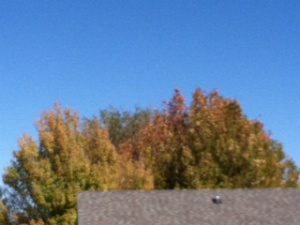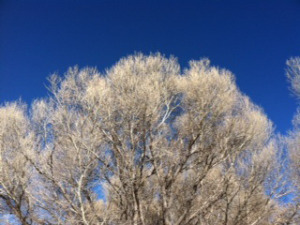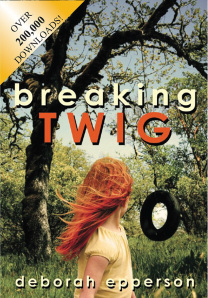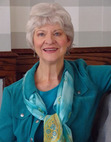Heidi M. Thomas's Blog, page 9
January 23, 2014
Meet Cowboy Poet Sally Harper Bates
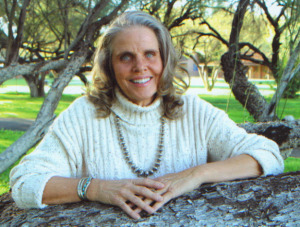 I had the privilege to meet Sally Harper Bates last spring when she moderated a panel on “The Lives of Cowboy Wives” at the Phippen Museum in Prescott AZ. Sally is a [past] ranch wife, a singer/songwriter, a cowboy poet, and a budding novelist. Born in Prescott, Arizona and raised on ranches in Yavapai County, she readily admits her roots have buried themselves so deep in the manzanita and malapai of Northern Arizona she would probably not survive a transplant. Her family stands on 5 generations of ranching roots in Texas, New Mexico and Arizona, and several members of her immediate family are still involved in ranching, even though she is no longer a ranch resident. She and her husband, Pat, live in Chino Valley on a 4-acre fenced plot that provides at least rural existence. Sally is the author of a children’s series—Cable Carson Cricket, A Cowboy’s Christmas—a story compilation, and Life Between Dust & Clouds—a memoir told in essay and poetry.
I had the privilege to meet Sally Harper Bates last spring when she moderated a panel on “The Lives of Cowboy Wives” at the Phippen Museum in Prescott AZ. Sally is a [past] ranch wife, a singer/songwriter, a cowboy poet, and a budding novelist. Born in Prescott, Arizona and raised on ranches in Yavapai County, she readily admits her roots have buried themselves so deep in the manzanita and malapai of Northern Arizona she would probably not survive a transplant. Her family stands on 5 generations of ranching roots in Texas, New Mexico and Arizona, and several members of her immediate family are still involved in ranching, even though she is no longer a ranch resident. She and her husband, Pat, live in Chino Valley on a 4-acre fenced plot that provides at least rural existence. Sally is the author of a children’s series—Cable Carson Cricket, A Cowboy’s Christmas—a story compilation, and Life Between Dust & Clouds—a memoir told in essay and poetry.
Welcome, Sally. How did you get started writing cowboy poetry?
I was raised so far from town that we didn’t have television until I was about 12 or 13 years old, so the family found other ways to entertain ourselves. One of those was a lot of reading, and since we were home-schooled many of our assignments included reading. My grandmother had a solid collection of poetry by Sharlot Hall (early area pioneer), and my dad’s favorite poet was Robert Service, so both of those writers became models for my research and reading. I loved poetry and music from the time I was old enough to pound out a rhythm on a toy piano I got for Christmas. And since poetry and music run together so nicely that just found its way into my life quite readily. I started writing poetry as assignments for my school projects, but found I wrote a lot of it when I was looking for something to do when riding wasn’t in the mix for the day.
Do you feel poetry is the best way to tell the story of ranch life and the West?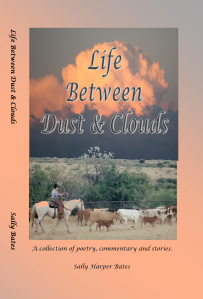
Not necessarily, but it’s a very effective way to express the heart of ranching. Stanley Kunitz, a Canadian poet, wrote something like “If we are to understand what it was like to live in any given time-frame of history it is to the poets we must turn.” I think poetry gives us a unique opportunity to share the heart of the matter in a way that not a lot of people relate to ranching and the cowboy way of life.
Tell us about your first poem, and the first one you had published or received recognition for.
I really don’t remember when I wrote my first poem, but it had to be in grade school. The first one I had published was in Western Horseman a long, long time ago titled “Howdy Rose, Remember Me?” But I was shortly after that included in a few anthologies such as Cattle, Horses, Sky and Grass published by Northland Press and Graining the Mare collected by Theresa Jordan.
You are a native of Yavapai County in Arizona. Tell us a little about your background.
Dad was a cowboy all his life—worked at the ORO Ranch off and on from the time he was 15 years old, and before that he did day-work for local ranchers. He worked his entire life in the shadow of Hyde Peak near Camp Wood on one side of the mountain or the other. On both sides of my family tree the roots are planted in ranching and farming somewhere in the west. I was raised around cowboys and their families all my life, and being a full time all time resident of Yavapai County most of my friends are ranch folks.
How were you introduced to music?
My Dad played the guitar and the fiddle a little bit, and Mom pecked around on the mandolin, but my real solid introduction came from a couple who worked on a neighboring ranch and came over for potluck and singing several times a year. They bought me my first guitar and taught me a lot. But my dad let me learn chords on his Monterey, and it was he and friends singing cowboy songs and reciting cowboy poetry that got me hooked on the genre. I had a few instructional pointers from folks, but never took any lessons, which is why I still run with the same 14 chords I learned back then.
Tell us how your CD, “Tramontane (From Over the Hill)”, came into being.
Tramontane was a fluke. I have four other albums that all had purpose and planning, and took some time to pull together. I just wanted to do one with some of my favorite songs on it, so that one came together pretty quickly. All my other albums were original songs or once in a while one that a close friend wrote. The title “Tramontane” has the traditional translation of “From over the hill.” If you look it up in the dictionary it means “foreigner”. Either way, some of the songs came from someplace other than my brain and guitar.
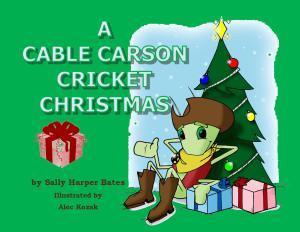 Why do you write, what makes you do it?
Why do you write, what makes you do it?
Lots of folks have asked that question through the years, and I tried for a long time to come up with some “ethereal” explanation. But my brother in law says all the girls in my family have a disease that causes us to have this intense need to cover any blank piece of paper with words or pictures. It’s called “Whiteitis.” I think that probably explains it as good as anything! But there is a piece of work by Terry Tempest Williams that is a pretty good list of all the why’s of a writer that I keep a copy of around.
Tell us a bit about your writing process.
No process . . . just when an idea and one-liner starts running around in my head I grab a piece of paper and write it down. From there if it keeps “niggling” around in there I’ll sit down and work on it and if it comes to fruition it’s usually a poem or the start of some kind of book or short story. If it stays interesting, I stick with it, time allowing.
Is there a theme or message you want to convey to your readers?
Not really . . . I just write what I love and what I have lived as it comes to mind. I guess part of that writing is a hopeful place that wants others to understand what a special kind of life ranching is, and to give people a different perspective and insight to what happens on ranches.
What authors or books have influenced you?
Without a doubt, Sharlot Hall. But about 28 years ago I had the privilege of meeting and becoming accepted in a group of 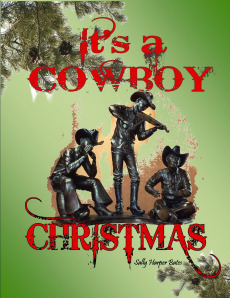 cowboy poets who began to mentor me and encourage me to write poetry. Not to just write it but craft it and work it into something I could be proud of. I can’t say I’ve got that mastered, but I owe a lot to Vess Quinlan, Joel Nelson, Carole Jarvis and Audrey Hankins, and those who are writing real quality poetry that made me want to write like they did.
cowboy poets who began to mentor me and encourage me to write poetry. Not to just write it but craft it and work it into something I could be proud of. I can’t say I’ve got that mastered, but I owe a lot to Vess Quinlan, Joel Nelson, Carole Jarvis and Audrey Hankins, and those who are writing real quality poetry that made me want to write like they did.
What are you currently working on?
I’ve lost control of my life and time . . . I’m helping produce a huge project called Home on the Ranch which will be an event that will celebrate and honor ranch women and their talents. It is going to be held in Wickenburg October 3-5 this year. That has completely absorbed my life for several months outside my clinging firmly to my church and ministry as it presents itself. I’ve been trying to write a short novel that is loosely based on an event that happened in our family at the turn of the century, but can’t really find time to get it accomplished. I get up at about 4:30 and most nights lights out end up being around 11 pm . . . and the computer is my “helpmate” these days. I get cabin fever and have to get outside sometimes, but the work calls me back pretty quickly.


January 17, 2014
Why I Love My New Home
Next Tuesday, January 21, will be one year since we arrived in Arizona. We love our new home state, and my S.A.D. is non-existent here with 300 days of sunshine.I love the sun, the mid-60s temperatures this January, and the hiking.
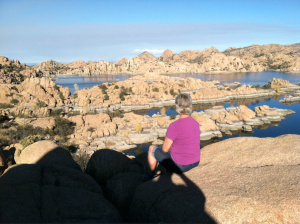 My favorite place to hike: Watson Lake
My favorite place to hike: Watson Lake
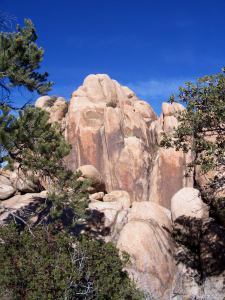 The spectacular and wondrous Granite Dells
The spectacular and wondrous Granite Dells
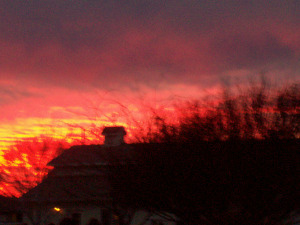 The sunsets are out of this world!
The sunsets are out of this world!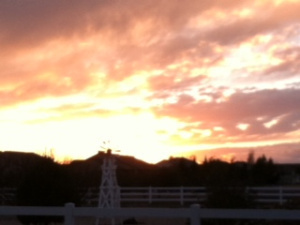
All in all, we’re very happy here. The next best thing to our native Montana, but without the snow to shovel! May 2014 be blessed for all of us!


January 9, 2014
Circles of Deception Probes Crop Circles
by Frances Evlin
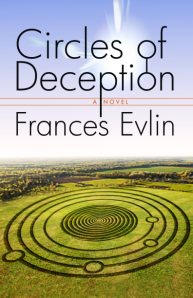 Instantly, Risa knew—the man was going to jump.
Instantly, Risa knew—the man was going to jump.
Thus opens Circles of Deception, my novel about the crop circle phenomena. Risa’s flash of intuition propels her into the world of the circle-makers, individuals with extraordinary mental abilities. And into my long-time favorite unsolved mystery.
To help you understand what I am going to rave on about, please look at photos of these amazing works of art. One such site is www.temporarytemples.co.uk/imagelibrary. It lists them year by year since 1994, three years after they gained worldwide attention, thanks to two retired English gentlemen who claimed they’d made all of them from 1978 to 1991.
Their story is one of the first you will find if you Google crop circles. The formations were not as complex then as they are now, and their confession sounded plausible until I got to the part where they said they made the “grapeshot” small circles by pole vaulting, to avoid leaving paths through the crop. That claim presented a serious credibility gap.
Anyone who looks at recent crop circle formations will see they have progressed far beyond the point where they could be made with a center pole, rope and stomper board.
They are no longer simple circles. In fact, many are not circles at all, but incorporate geometric designs, and representations of animals, birds and other creatures great and small. Those that still feature circles may include 3-D elements (Sugar Hill, August 1, 2007) or intricate floor lays (Etchilhampton, July 25, 2011).
I do not believe these formations are made by ETs. God created the universe and science does not know where it ends. We do know it contains thousands of planets. It is unreasonable to presume that only Earth is populated with intelligent beings. Novelists and screen writers often portray ETs as other than humanoid, but God created man in His image, so we can further presume that Beings from other planets would at least resemble Earth dwellers. However, it equally unreasonable to hypothesize that ETs would venture through space only to leave field art designs that Earth people are unable to interpret.
The designs are much too complicated and precise to be made by weather anomalies.
That leaves only humans as the probable formation makers. Eliminating those designs that are obviously contracted to publicize an event or advertise a product, we are left with other field art of unexplainable origin. A phenomenon, a modern mystery.
So I wondered what sort of individuals could be creating them. They would have to be people who: (1) had an excellent grasp of math, particularly geometry; (2) had some knowledge of architecture, to know how to lay out a pattern, even on hilly ground; (3) were willing to stomp around for hours at night in all kinds of weather; (4) had spouses or family members who did not question their frequent absences; (5) had a reliable vehicle with enough cargo space to haul their tools; (6) were risk-takers, foolish enough not to care about being caught and prosecuted for trespass or criminal mischief; (7) were sufficiently dedicated to their mission to never utter a word about it to anyone other than their circle-making buddies.
It was that last requirement that intrigued me the most. People like recognition. If they create something fantastic, beautiful and/or inspiring, they want the world to know they did it. Remember we are not talking about only one nationality or one ethnic group. Crop circle formations have appeared in twenty-five countries. The network of circle-makers would have to be worldwide. They would want to compare notes, to see who is contemplating what sort of design. Can’t you imagine the jealousy, the hard feelings (anger?) if a group in Country A was all set to put down a never-before-seen pattern only to find a group from Country B had done it within the last twenty-four hours?
What would be the consequences if a group became careless, left telltale footprints, let themselves be seen or otherwise jeopardized the mystery the phenomena needs to survive? Would members of other worldwide groups forgive and forget? Wouldn’t there be serious punishment for the offending group, followed by public denunciation of that group as frauds?
A similar scenario exists for an individual circle-maker who became disenchanted with the whole idea and declared s/he intended to go public. Is there a secret society, ala some university groups, whose threats (physical, social, financial) would force that person to keep quiet?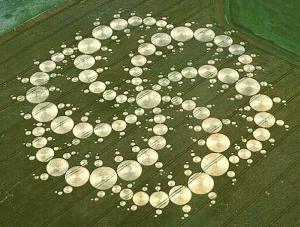
Did the British government set up Operation Blackbird only as a disinformation campaign? Why doesn’t the scientific community seriously seek to solve the origination of the formations instead of declaring all of them hoaxes and ridiculing those who research them?
Those are the thoughts that ricocheted through my mind when I visited the crop circle near Wilbur, Washington in 2007 (simple circles, not a stylized Teddy bear.) Who ARE these people? True, some folks are gifted at creating designs, although why they would choose cereal crops as their medium of expression baffles me. HOW do they escape detection? In over thirty years, and with up to 10,000 formations recorded worldwide, nobody has been prosecuted for trespass and/or criminal mischief? Some of the formations have appeared within sight of a major highway and no motorists noticed someone skulking about in the dark fields? (Wickham Green, July 29, 2010). Amazing!
And where are the “practice” formations? The attempts that turned out to be less than perfect? Once in a while, a poorly executed formation will appear, but the great majority are found in fine shape. This field art cannot be done over. There was no sloppy early version of The Milk Hill Galaxy of August 12, 2001, with its 409 circles of graduating size. And it has not been replicated, in spite of a Crop Circle Challenge offering approximately $160,000 to do so.
I think we have two phenomena here: The tantalizing circles and the mindset of the individuals who create them.
Frances Evlin is the author of eight novels: two mysteries, one YA, and five fantasy. She is a Pacific 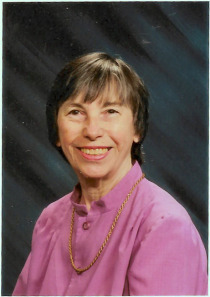 Northwest native whose love for creative writing predates her years involved with marriage, children and employment in the lumber industry. She appreciates the power of the English language and enjoys tinkering with words, as you will discover when you read her books. She enjoys reading soft-boiled mysteries, light fantasies and ghostly paranormals. Not sure if she’s an optimistic pessimist or a pessimistic optimist, she strives to live up to her motto: Don’t ever get daunted.
Northwest native whose love for creative writing predates her years involved with marriage, children and employment in the lumber industry. She appreciates the power of the English language and enjoys tinkering with words, as you will discover when you read her books. She enjoys reading soft-boiled mysteries, light fantasies and ghostly paranormals. Not sure if she’s an optimistic pessimist or a pessimistic optimist, she strives to live up to her motto: Don’t ever get daunted.


December 31, 2013
2013 in review
The WordPress.com stats helper monkeys prepared a 2013 annual report for this blog. Thanks to all of you who follow me and who comment! HAPPY NEW YEAR!
Here’s an excerpt:
The concert hall at the Sydney Opera House holds 2,700 people. This blog was viewed about 9,700 times in 2013. If it were a concert at Sydney Opera House, it would take about 4 sold-out performances for that many people to see it.
Click here to see the complete report.


December 24, 2013
Merry Christmas!
 Today, as we celebrate the birth of Jesus, let us be thankful for family, friends, health and happiness.
Today, as we celebrate the birth of Jesus, let us be thankful for family, friends, health and happiness.
And this version of “Hallelujah” says it all:
Here’s wishing you a Happy, HEALTHY New Year!


December 19, 2013
The Book I Want to Read Part II
by Amy Hale Auker
In spring 2006, I left the Texas panhandle on an extended camping and hiking trip with my ten year-old daughter. Seven 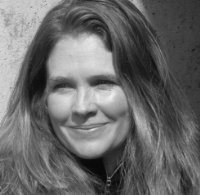 weeks of sleeping in a tent in state and national parks in the western United States. From southern New Mexico to the Big Horn Mountains of Wyoming. We got a motel room every seven to ten days for laundry and bathing. Then we’d restock our cooler and go again. (For the complete story of that trip, you’ll have to wait for the book.) Before we left, I asked family and friends for reading recommendations—and spent a small fortune filling a box with books. And so, Kerouac, Garrison Keillor, Edward Abbey, Jeanette Winterson, Stegner, and Mary Oliver hiked into my life. I will never forget reading Sexing the Cherry in our tent in Zion National Park, and even now, I turn to certain passages the way one would open a box of hand-crafted chocolates. I also read Cormac McCarthy and a McMurtry book I had never taken the time for. I read Kingsolver’s essays and some Michael Pollan.
weeks of sleeping in a tent in state and national parks in the western United States. From southern New Mexico to the Big Horn Mountains of Wyoming. We got a motel room every seven to ten days for laundry and bathing. Then we’d restock our cooler and go again. (For the complete story of that trip, you’ll have to wait for the book.) Before we left, I asked family and friends for reading recommendations—and spent a small fortune filling a box with books. And so, Kerouac, Garrison Keillor, Edward Abbey, Jeanette Winterson, Stegner, and Mary Oliver hiked into my life. I will never forget reading Sexing the Cherry in our tent in Zion National Park, and even now, I turn to certain passages the way one would open a box of hand-crafted chocolates. I also read Cormac McCarthy and a McMurtry book I had never taken the time for. I read Kingsolver’s essays and some Michael Pollan.
I was both ruined and reborn. No more small and safe for me.
In 2008 came the next person and next event to change my reading life. I moved in with my now husband , and we combined our libraries. Piled on the dining room table were copies of Harper’s, The Atlantic, The New Yorker, and The Sun. He comes from a family of avid readers and they are just as likely to loan me Henry Miller as Jane Smiley. I discovered Jonathan Safran Foer, Jeffery Eugenides, Philip Roth, John Irving (hallelujah), Ann Patchett, Annie Proulx, Junot Diaz, Elizabeth Strout, Thomas McGuane, George Saunders, and Jennifer Eagan. I bounce off of Elmore Leonard from time to time and have gone back to revisit Cather and Anne Tyler and Louise Erdrich because I no longer have to check them out of the library. And when Collum McCann came into my life, I spent weeks with Let the Great World Spin. I read every short story published in the New Yorker and then seek out other things those writers have written.
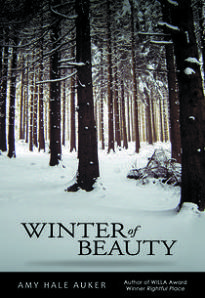 Every essay starts out with a good question. This one started with why did I switch genres from creative non-fiction to fiction, and why do I choose to write literary fiction? I love the personal essay, the lyric essay, and I know that I will always write them, but that kind of writing is often exhausting. The me, me, me, what do I think, what do I think theme is quickly exhausted. Plus, there are some stories that I cannot tell in an essay because they are not mine to tell. When I was standing before our bookshelves five years ago, waiting on the long slow molasses of the university press to finally get Rightful Place in print, my husband mentioned that he reads to be entertained. So, I set out to tell the stories I can’t tell as my own. I gave those stories to my characters, the characters who can make those stories come alive.
Every essay starts out with a good question. This one started with why did I switch genres from creative non-fiction to fiction, and why do I choose to write literary fiction? I love the personal essay, the lyric essay, and I know that I will always write them, but that kind of writing is often exhausting. The me, me, me, what do I think, what do I think theme is quickly exhausted. Plus, there are some stories that I cannot tell in an essay because they are not mine to tell. When I was standing before our bookshelves five years ago, waiting on the long slow molasses of the university press to finally get Rightful Place in print, my husband mentioned that he reads to be entertained. So, I set out to tell the stories I can’t tell as my own. I gave those stories to my characters, the characters who can make those stories come alive.
Though I live in the West and write from the West, often about cowboys and life and work on a ranch, I don’t enjoy reading westerns where bullets fly or someone highjacks a train or a stagecoach or a campfire in every chapter. I don’t enjoy reading a romance where within five pages we know who is beautiful, who is ugly, and that there will be a proposal or a wedding at the end, after much difficulty, of course. The truth is that when the bullets stop flying and the wedding is over, someone must clean up the mess. In the cold hard light of a morning after the honeymoon, the plumbing backs up in the bathroom and down the hall. Sometimes cute puppies die and sometimes young men have epiphanies and sometimes the weather is more real than the news. And fifteen years into a relationship there are hurdles and hearts that look completely different than wedding cake and vows. None of us have bows on the tops of our heads, tying us up into easily defined packages.
One of the lessons Elmore Leonard brings to us is that there are no villains. There are no heroes. There are humans on a 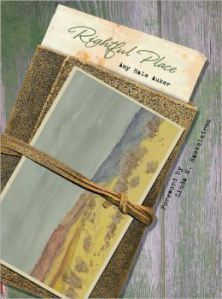 human journey with no beginnings and no endings. The exploration of the human heart, the human journey, as well as our strong ties to sense of place bring me back again and again to the page. I value good writing, the strong and capable use of language, as well as breaking the rules in just the right way to bring power to the page. I fall back on the theory that I should write the book that I want to read. Have I done that yet? No, not all the way. I wonder if even Colum McCann has achieved that. And yet, each time I pick up my pen or put my fingers on the keyboard, each time I struggle with the questions of character, plot development, and structure, I know that when the writing time is done, when I retreat from office to couch in front of the fire, a book will wait for me there. And someday, I hope, someday, to write the book I want to read.
human journey with no beginnings and no endings. The exploration of the human heart, the human journey, as well as our strong ties to sense of place bring me back again and again to the page. I value good writing, the strong and capable use of language, as well as breaking the rules in just the right way to bring power to the page. I fall back on the theory that I should write the book that I want to read. Have I done that yet? No, not all the way. I wonder if even Colum McCann has achieved that. And yet, each time I pick up my pen or put my fingers on the keyboard, each time I struggle with the questions of character, plot development, and structure, I know that when the writing time is done, when I retreat from office to couch in front of the fire, a book will wait for me there. And someday, I hope, someday, to write the book I want to read.
(Note: I left out so many great writers that I love, so many great books that I am firmly attached to, but the name dropping had to stop somewhere!)
Amy Hale Auker writes and rides on a ranch in Arizona. She is the author of Rightful Place, 2012 WILLA winner for creative non-fiction. Her first novel, Winter of Beauty, was released by Pen-L Publishing in October. You can read a current essay of Amy’s in the January 2014 issue of Cowboys&Indians magazine, on newsstands now. http://www.amyhaleauker.com


December 18, 2013
The Book I Want to Read Part I
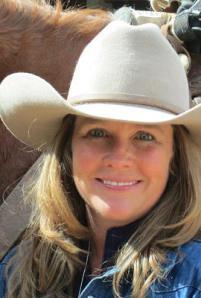 Amy Hale Auker writes and rides on a ranch in Arizona. She is the author of
Rightful Place, 2012 WILLA winner for creative non-fiction. Her first novel, Winter of Beauty, was released by Pen-L Publishing in October. You can read a current essay of Amy’s in the January 2014 issue of Cowboys&Indians magazine, on newsstands now. http://www.amyhaleauker.com
Amy Hale Auker writes and rides on a ranch in Arizona. She is the author of
Rightful Place, 2012 WILLA winner for creative non-fiction. Her first novel, Winter of Beauty, was released by Pen-L Publishing in October. You can read a current essay of Amy’s in the January 2014 issue of Cowboys&Indians magazine, on newsstands now. http://www.amyhaleauker.com
by Amy Hale Auker
My current Amazon order looks something like this: the new Ann Patchett memoir about her writing life, The Goldfinch, Paul Harding’s Tinkers, a novel by Lionel Shriver (she’s a woman!), an advance order for Anthony Doerr’s new book, and Howard Zinn’s history of the United States.
My father threw out the television when I was in the fourth grade, but my reading life began long before that. In fact, I do not remember a time when I could not read and I stared with dismay as Jill and Ted single-syllabled their way through my kindergarten class taught by a recent college graduate. My father made peace by promising her I would sit still through the lessons if I could read anything I chose. Then he drove to the nearest big city bookstore, returning to our tiny country parsonage with a bag of books: Charlotte’s Web, the whole Laura Ingalls Wilder series, Five Little Peppers and How they Grew, Anne of Green Gables and many more. I sat still during class—and lunch and recess and free play and art and any time someone would leave me alone, my brain firmly wrapped in a book.
As writers, we know our writing life is defined by our reading life. But what defines our reading life? For the most part, our reading life is informed by libraries. And libraries are influenced by region and the reading demographic in that area. Our personal shelves are often defined by season or inner journey with the fluff being donated to the Friends of the Library fundraiser each year. The shifts in my reading life haven’t always been in a straight upward trajectory, but rather, wind around in loops. Inspiration to stretch, to read the “hard” books, has often come from surprising places.
I read “The Glass Menagerie” because it was in one of my father’s high school literary anthologies, the same reason I read Poe. I read The Complete Adventures of Sherlock Holmes twice during junior high when I was tired of Cherry Ames, Grace Livingston Hill, Nancy Drew, books about girls and horses, and Janette Oke. I discovered Irving Stone when my mother caught me sneaking smutty romance novels, and once again my father made peace. He gave me The President’s Lady which was shelved next to The Agony and the Ecstasy, The Origin, and Lust for Life. Imagine what would have happened if he had steered me toward John Irving! I read Heart of Darkness because I was in Academic Decathlon my junior year in high school.
When my life became formulaic and prosaic, so did my reading life. Too poor to buy books, I was dependent on small town libraries and country librarians. But still, I devoured the written word. While pregnant, I read every book on gestation and the birthing process. While nursing, I read about lactation and found out surprising things about humans in general. When I began to homeschool my children, my reading life took many growth spurts, and I discovered the wonderful world of fantastical literature. Arthur Ransome, J.K. Rowlings, Brian Jacques, and Jean Craighead George, to name only a tiny few, inspired me. Of course, also during those years, I embraced simple, sweet, straightforward stories that could hold my brain still long enough for me to drift off into much-needed sleep.
The inspiration to read “hard” books came again the summer my son was fourteen. He read “The Red Pony” that spring for part of his literature course. In June we went to the big city library and he showed up at the circulation desk with a huge pile of books. When I wearily asked him what was going on, he explained to me that he was going to “read every book that man wrote.” And he did. I hope Steinbeck heard him from the grave. Because of that moment and a series of separate events, I began to, once again, read the hard books.
The last several years for me have been defined by both the reading and the writing. My exposure to great writing now stands firmly on a foundation of years spent seeking out writers who get the job done, stands firmly on a foundation of my love for language and the poetic use of language.
My journey as a woman has been marked by Clarissa Pinkola Estes, Leaning into the Wind, Ride the White Horse Home, the writings of Jean Shinoda Bolen and Maya Angelou, and the weeks I spent reading, The Mists of Avalon—twice. The evolution of my faith has been marked by the discovery that there are more books of wisdom than the one I was taught from as a child. My writing life has been influenced by possibly the same books on your shelf: Cameron, Goldberg, Lamott, Dillard, Strunk and White, et al.
Over the past decade, my reading life got huge boosts from two people and two events. My non-fiction editor and friend  Andy Wilkinson pointed the way to great essayists: E. B. White (which led to the poet Donald Hall, which led to both Rilke and Rumi), Verlyn Klinkenborg, Merrill Gilfillan, Terry Tempest Williams, and Dan Flores. Andy directed me to Gretel Ehrlich and Robert Graves. Hard books, hard reading, but well worth it, both because of their beauty and their aid in developing focus. Andy gave me my own copy of Stephen Mitchell’s translation of the Tao Te Ching.
Andy Wilkinson pointed the way to great essayists: E. B. White (which led to the poet Donald Hall, which led to both Rilke and Rumi), Verlyn Klinkenborg, Merrill Gilfillan, Terry Tempest Williams, and Dan Flores. Andy directed me to Gretel Ehrlich and Robert Graves. Hard books, hard reading, but well worth it, both because of their beauty and their aid in developing focus. Andy gave me my own copy of Stephen Mitchell’s translation of the Tao Te Ching.
Please join us tomorrow for the second installment of Amy’s reading and writing journey.


December 12, 2013
Breaking TWIG a Thought-Provoking Read
Thanks, Heidi, for inviting me to be your guest today. I’m honored to share some thoughts on your blog about my book, Breaking TWIG.
Set in rural Georgia in the 1960s, Breaking TWIG is a coming-of-age novel about Becky (Twig) Cooper, a young woman trying to survive the physical and emotional abuse of her mother, Helen, a beautiful, calculating woman. Not even Twig’s vivid imagination, keen wit, and dark sense of humor is enough to help her survive the escalating assaults of Helen and a new stepbrother, Donald, but help comes from an unexpected source–Frank, her stepfather.
The first thing readers usually want to know is if the storyline is based on my personal experience? I am quick to say my mother was the polar opposite of Helen. My mother was loving, kind, and supportive. I had a large, wonderful extended family also, but it was my mother, Betty, who encouraged my writing. Mom passed away before Breaking TWIG was published, but she did get a chance to read it. The book is dedicated to her.
The second question I’m asked is what was the inspiration behind the story? Frankly, the idea stems from my college studies. I majored in biology and English and have always been interested in the issue of heredity verses environment in child development. Which one has the most influence on a child? At times, Becky (Twig) worries that she has inherited her mother’s “picker” ways and her gene for chicanery, but Becky also believes having one person who loves and believes in you is all a person needs to keep hope alive. Growing up, both Becky and Henry (a family friend) had one parent who berated and abused them, and one parent who gave them unconditional love and support. Helen had no such love or support system when she was a child. I wanted readers to think about how important the roles of unconditional love and a supportive environment—or the lack of these two influences—are in helping to shape a child’s development into an adult.
The largest writing difficulty was in regards to the changing relationship between Frank and Becky. It shocked some 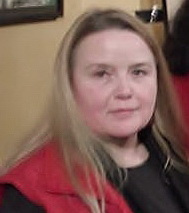 readers. I hadn’t planned that relationship, but as many writers have said — characters in a novel seem to take on a life of their own. Also, there are racially-charged words that are not politically correct in today’s society, but they were typical of the language used in the Deep South in this time-frame when traditions like segregation were colliding with Civil Rights, integration, and Vietnam.
readers. I hadn’t planned that relationship, but as many writers have said — characters in a novel seem to take on a life of their own. Also, there are racially-charged words that are not politically correct in today’s society, but they were typical of the language used in the Deep South in this time-frame when traditions like segregation were colliding with Civil Rights, integration, and Vietnam.
My goals in writing are to remain true to my characters, and to tell a good story. A story that shows nobody is perfect, life is messy, and we all fail more often than we’d care to admit. But with faith, love, and perseverance, we can find the strength to continue toward our own truth with a bit more forgiveness and understanding for others and for ourselves.
Today, I’m working on a romance-suspense called Caddo Girl. It’s set in Louisiana in the 1970’s. After it’s completed, I’m doing a sequel to Breaking TWIG because so many readers have asked me to continue Becky’s story. They have actually called me to ask if Johnny and Becky ever got together. I tell them I don’t know. My imagination hasn’t got that far yet.
Thanks for stopping by and have a blessed holiday season.~ Deborah
Thank you, Deborah, for sharing your writing journey with Breaking TWIG. I loved the book and I’m looking forward to reading your next one!
You can find Deborah on her Website, her blog, on Twitter @DDEpperson, on Facebook, her e-mail, and the book is available in paperback and ebook on Amazon.


December 5, 2013
Ava Wilson Writes of Treasures Found
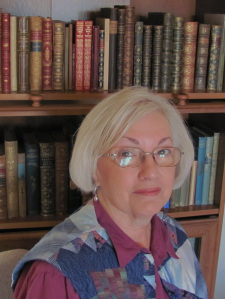 Please welcome Ava Wilson, author of the Driftwood Diaries and Under a Klondike Sky. These books are written with the premise of a bookstore owner who finds old diaries and letters and tells the stories through her discoveries.
Please welcome Ava Wilson, author of the Driftwood Diaries and Under a Klondike Sky. These books are written with the premise of a bookstore owner who finds old diaries and letters and tells the stories through her discoveries.
Driftwood Diaries Synopsis: Three women’s stories are revealed in their diaries found by a book store owner. An abused wife finds herself lost in the wilderness of Kodiak Island, Alaska. Marie discovers love and bravery in the face of overwhelming obstacles. Another young woman travels by wagon to Colorado and Texas after the Civil War, hiding a scandalous secret. Susan’s diary reveals a husband’s betrayal, and her struggle to make a home for her children on the tall grass prairie of Texas. Margaret, as an aging grandmother, remembers a special Valentine’s Day while growing up poor during the Great Depression.
Under a Klondike Sky Synopsis: Letters found in an antique sewing box describe Abigail Parker’s journey to the Klondike gold fields in 1898. The long trip by stagecoach and railway from central Oregon to Seattle is just the beginning of a story rich in detail with harrowing adventures and poignant love. Soon after her steamboat arrives in Dawson City, Abigail is forced to deal with disaster and betrayal in the hostile environment. Befriended by dressmakers Molly and Esther, performer Klondike Kate, and the beautiful half-breed Etta, she survives her first ice-bound winter in a small log cabin. The clamor for almighty gold shapes the town’s inhabitants, causing men and women alike to justify the means to acquire it. Three very different men come into Abigail’s life, but only one deserves her love.
Many family histories have been unearthed by such discoveries. Where did your ideas come from and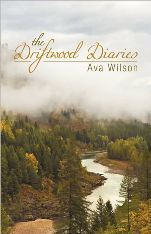 how did you decide to write your books in this format?
how did you decide to write your books in this format?
My husband and I owned a rare bookstore for several years, and discovered many personal items among our estate purchases: letters, invoices, old photos and vintage greeting cards. When I decided to write my first novel, The Driftwood Diaries, I liked the idea of having a bookseller find old diaries that revealed astonishing lives. Reader comments encouraged me to follow the same idea when I wrote Under a Klondike Sky. Most of the stories I write have been simmering in my brain for years, the results of an over-active imagination! However, my new novel is inspired by an obituary I read last year.
When did you first discover you were a writer? I’ve always been a voracious reader, and from a young age I thought, “I can do that!” Short stories dominated my writing for decades; however, when a major magazine paid for my travel article in 1991, I began to take it seriously.
What has your writing journey been like up to publication? Slow! Once I started writing The Driftwood Diaries I was still insecure in the construction of the story. I knew readers would be intrigued by the settings and history, but worried about my character development and plot. When the book was ready to publish, I worked through the self-publishing process. I chose to form my own publishing entity, Crooked River Publishing, and hired a terrific printing company for designing the cover and format. They also printed Under a Klondike Sky, and will take care of the new novel. Of course, being my own publisher means that I house the inventory and handle marketing, orders, and shipping.
Both of your books feature stories set in Alaska. Have you lived there? Yes, we lived in Alaska 38 years, and were fortunate to witness the wilderness in all its extremes. My experiences there are especially reflected in the story about Kodiak Island. When my husband asked me to marry him, I said I didn’t want a boring life, and I’ve certainly had many adventures since then.
Did you base the books on actual people? Several historical characters come and go in my second novel Under a Klondike Sky, but my stories are about fictional people. For one of my stories in The Driftwood Diaries I used a memoir written by a great-aunt, who described a journey to the unsettled Texas prairie in 1877, for information about settlements, hardships, and children’s roles in the westward movement.
Is there a message in your stories? My goal is to reveal how regular women of their time in history discovered untapped “gumption”, or bravery, to solve the oppressive or dangerous situations into which they’d been thrust. A sweet romance is usually just below the surface of my stories, since I am a romantic at heart.
What books or writers have most influenced you? As a young adult I became a passionate reader of Australian writer Nevil Shute and frontier writer Janice Holt Giles for their amazing character development within dynamic historical events. Later, Wallace Stegner’s Angle of Repose and Barbara Kingsolver’s The Prodigal Summer, made me want to be the best writer I could be.
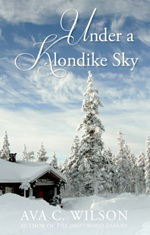 What was the hardest part of writing your books? For many years, I would find all sorts of excuses for not finishing my first novel since I wasn’t sure of my skill. When it was finally on paper, I kept editing over and over, and almost overworked the story. After six years, I finally turned loose of the manuscript, publishing it for better or worse! Under a Klondike Sky was completed in a year and a half.
What was the hardest part of writing your books? For many years, I would find all sorts of excuses for not finishing my first novel since I wasn’t sure of my skill. When it was finally on paper, I kept editing over and over, and almost overworked the story. After six years, I finally turned loose of the manuscript, publishing it for better or worse! Under a Klondike Sky was completed in a year and a half.
Do you have any suggestions to help others become better writers? I encourage aspiring writers to join a local writers group, whose mentoring and critiques are valuable sources for understanding the writing process and self publishing. Being in the company of other writers always gives me a boost!
Are you working on another project? A new novel, yet unnamed, which takes a young woman from depression era Fort Rock, Oregon, to the killing fields of WWII, should be in print by late winter.
A short bio: Raised in the panhandle of Texas, I married young, and we headed north to Colorado. Following college, we moved to Alaska in 1965, driving the muddy Alcan, which was a precursor of the life I’d have over the next 38 years. We raised three daughters, hunted, fished, and explored while engaged in making a living. I began experimenting with short story writing and magazine articles, with my first paid acceptance in 1991. Owning a rare book store prompted us to travel across the US in search of elusive titles, and opened up a new interest in early 20th century cover art illustrators. During this time I always had a work in progress, but was eager to get one particular story published. We moved to central Oregon in 2005 to be closer to our extended families (and Alaska was getting too cold for our aging bones!) With encouragement from my husband and daughters, in 2010 The Driftwood Diaries fulfilled my dream of having a book in print; Under a Klondike Sky followed in 2012. Two short stories have won awards in contests sponsored by Central Oregon Writers’ Guild: The One-Eyed Goose in 2011 and Weekly Rats in 2012. My third novel is slated to be in print by late winter. When I’m not writing (with my yellow lab, Sophie, at my feet), I’m in the garden or making cookies for the grandkids.
Where can we find your books?
Check your local bookstore or use the following:
https://www.facebook.com/avawilsonauthor
Kindle editions:
http://www.amazon.com/Under-Klondike-Sky-Ava-Wilson-ebook/dp/B008G5CO2S/ref=pd_sim_b_1


November 27, 2013
Happy Thanksgiving!
 This is not just “Turkey Day.” In fact, we’re not even having turkey! For us, it’s a day set aside to remember what you are grateful for, and we have many, many things, including plenty of healthy food!
This is not just “Turkey Day.” In fact, we’re not even having turkey! For us, it’s a day set aside to remember what you are grateful for, and we have many, many things, including plenty of healthy food!
I’m thankful every day for my parents who raised me in faith, taught me to be self-reliant, honest, and that I could do whatever I set my mind to. They instilled in me a love of reading and from there came my career in writing.
I’m thankful for my grandmother, who provided the inspiration for what will be four books by the end of next year. Little did I know when I was 8-10 years old, riding the pasture by her side, that I would write a series of novels based on her life.
I’m thankful for my brother, my only sibling, and for the fact that we are best friends, and that he provided me with a wonderful niece and nephew, and from there grand-niece and nephew! I’m so grateful I have family on both sides that we love and get along with splendidly! My sisters-in-law are really my sisters, and their families my family.
I am thankful for my husband, also my best friend and my most ardent supporter, for the adventures and fun we’ve had in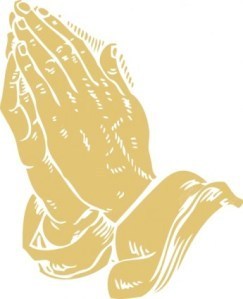 our forty years together. And I am grateful for alternative treatments that give us hope for renewed health in his battle with cancer.
our forty years together. And I am grateful for alternative treatments that give us hope for renewed health in his battle with cancer.
I am thankful for our new home in sunny Arizona, where I am still able to sit outside on my patio with my morning coffee (most mornings) in the last week of November!
I’m thankful for great neighbors and new friends we’re making here, as well as the many old friends I left behind in Washington and Montana.
And I’m thankful for God in my life, for He gives me strength and courage to live each day to the fullest!
Happy Thanksgiving!



